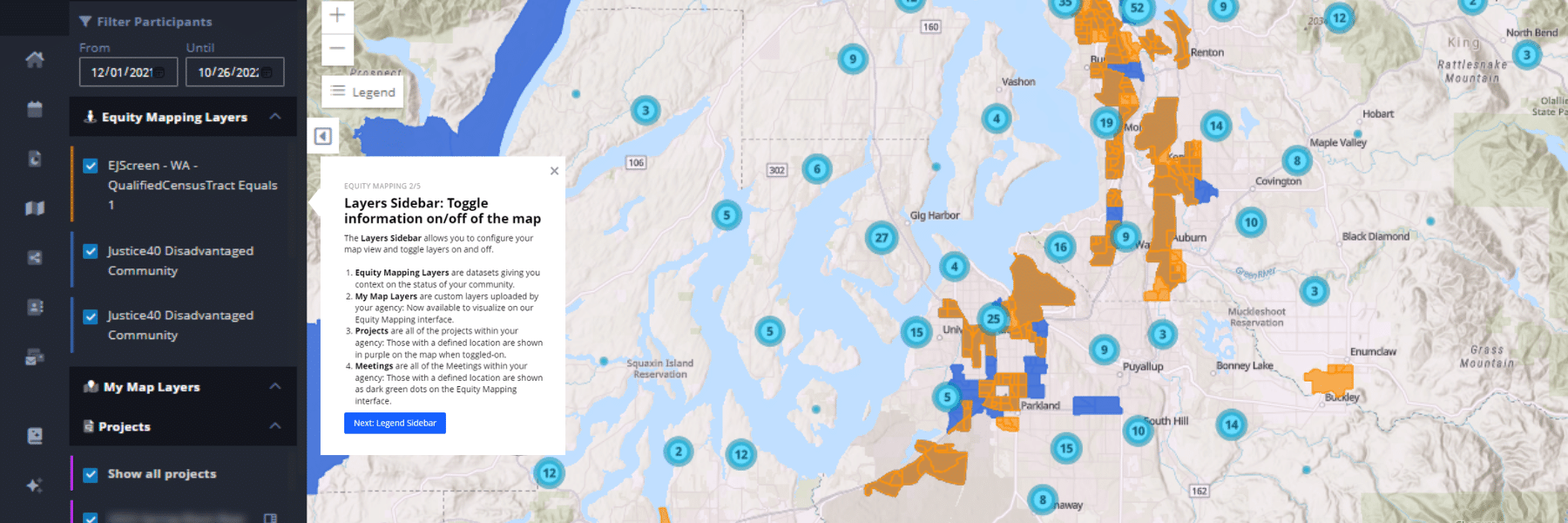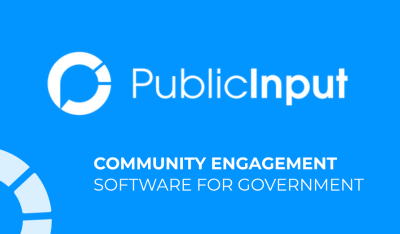
Why Equitable Engagement is Important for Government Agencies
Legally, many government entities that receive federal funding are required to ensure disadvantaged communities have ample opportunities to participate in public projects. To prove compliance, these agencies must provide proof of analysis, documentation, disclosure, and consideration in making their decision.
Ethically, it’s important to understand the needs and concerns of all stakeholders in order to improve your community and society as a whole. Civic engagement shouldn’t be an echo chamber. Everyone deserves to have a voice.
Logically, collecting data from every community and demographic is the best way to make informed decisions that benefit all citizens, not just the privileged few.
Equity Mapping helps you comply with rules and regulations, conduct equitable engagement, and make better, more defensible decisions. PublicInput’s Equity Mapping makes it easy to:
-
- Overlay project boundaries and participant locations with key environmental or demographic data
- Tailor engagement approaches to target affected communities
- Bring in local data layers using native ESRI ArcGIS integration to visualize how local systems interact with and affect engagement
- Build targeted segments to filter engagement from residents living in Qualified Census Tract areas, Justice40 communities, flood plains, council districts, and more
- Identify underrepresented or disadvantaged groups early in the engagement process
- Use data to screen for potential risks and plan engagement strategies
- Demonstrate representative engagement and reporting that defends your decision-making process with PublicInput’s dynamic reporting suite
What Stands in the Way of Equitable Engagement?
To understand the need for equitable engagement in the United States, you need to understand the why.
Why is equitable engagement important?
Why could engagement efforts be returning poor results in disadvantaged communities?
Why could you be hearing from one community and not another?
Understanding the why is the foundation of building trust, transparency, and accountability with your communities. It’s more than just disinterest. Mistrust and marginalization between disadvantaged communities and government have built a wall between government and constituents.
This historical foundation of distrust is paired with hundreds of other barriers. Participating just one public meeting can be dependent on dozens of factors, such as:
-
- Access to a stable internet connection (digital meeting) or the physical meeting location
- Access to a reliable phone network and ability to look up the meeting phone number to call into a meeting
- Access to transportation
- Scheduling conflicts such as: work, family obligations, transportation
- A quiet space to listen and participate
- Language barriers
- Lack of advertisement/awareness
- Insufficient accommodations for ADA (alt text for images, closed captioning for the deaf or hard of hearing, no ramp or lift to access a physical meeting location)
- Proper understanding of how a policy, budget, or plan will affect the community
- Trust that participating in the meeting will have any impact on the decision-making process
Removing some of these barriers can positively impact participation. For example, providing childcare at meetings or providing auto-translation and other language tools can automatically make participation more accessible. But what if the why goes deeper than that?
How Does Equity Mapping Help?
This is where equity mapping comes in. Equity Mapping helps you build layers of context. Each map layer you add, whether it is a default layer like a Qualified Census Track (QCT) or a customized map layer, provides an extra layer of context to understand your community.
You can use these layers to answer simple questions about the demographics of your participants in each project, such as the amount of participation from members of the community who are 65+, or from participants who are classified as “low-income” by the federal government. Add a Justice40 or EJSCREEN layer to highlight communities that are particularly underrepresented and vulnerable to environmental effects like pollution and flooding, or to highlight certain demographics.
One of the easiest ways to interpret your engagement data is evaluating whether or not a project has provided adequate representation regarding the situation at hand. If you are soliciting questions on a new bus route, the opinions of people who ride the bus every day and rely on it for transportation might have more impact than that of a well-off retiree who owns their own car.
Dive Deeper and Create Endless Opportunities for Insight Into Your Community
This is where your own creativity, combined with Equity Mapping, can help you gain even more insight into your community. Equity mapping allows you to upload your own custom map layers. Use state, regional, or local data to develop more in-depth insights about how your community engages, such as:
-
- Correlations between local resources (like a map of public transit or libraries) and engagement in underserved communities
- Correlations between local non-profit organizations and engagement
- Correlations between campaigns; for example, evaluate the effectiveness of tactics by comparing engagement data based on campaign or approach
The more questions you ask, the more you can use data and insights to back up your strategic decision making. Use equity mapping to create endless opportunities for insight into your community. Strategize ways to raise equity and give disadvantaged communities a voice, and act on your new knowledge to create engagement opportunities that meet marginalized communities where they are.
Learn More About Equity Mapping
The following video, created and narrated by our head of product Alex Gibson, gives you a brief introduction into the structure and functionality of the Equity Mapping feature on the PublicInput public engagement platform.
Build Equitable Engagement Strategies with Equity Mapping
Ready to create a living, breathing map of your engagement projects? PublicInput has everything you need to help examine your projects over time to find the why, as well as take steps to build trust between your government and community. Every project you add to your equity mapping tool brings in more data to analyze.



